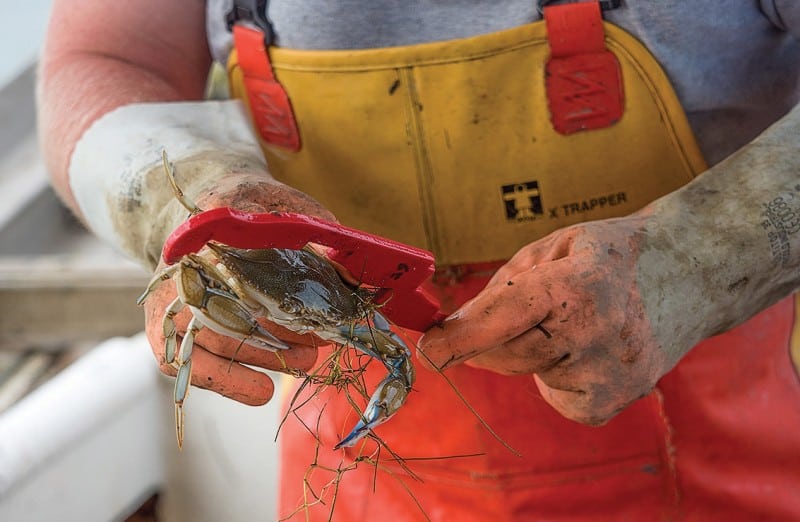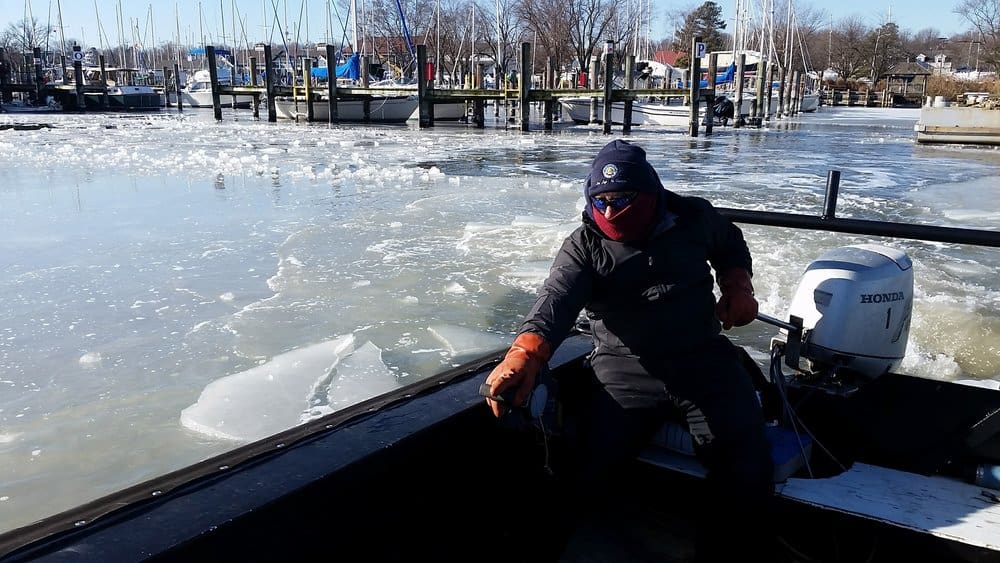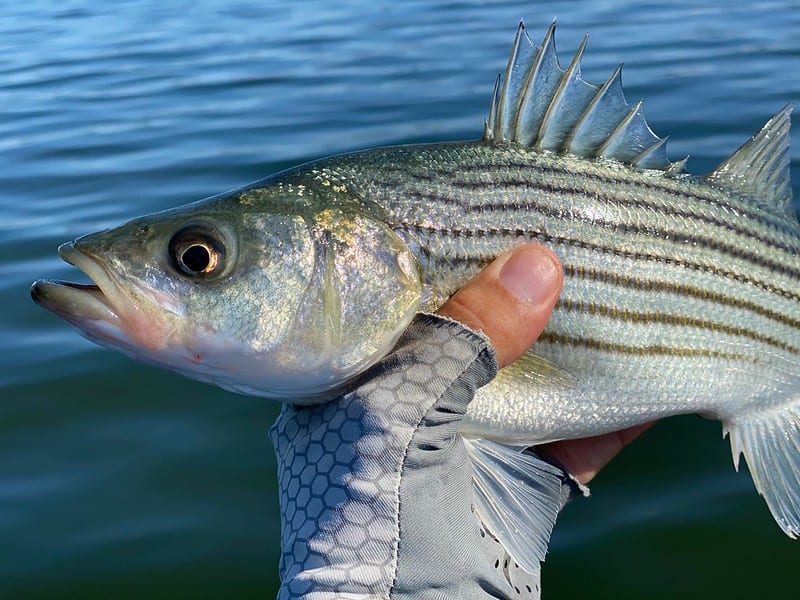By Timothy B. Wheeler, Bay Journal News Service
It turns out there could be a price to pay for eating all those “jimmies.” Scientists at the Smithsonian Environmental Research Center have found that the focus of Chesapeake Bay commercial and recreational crabbers on catching male crabs is preventing some female crabs from having as many offspring as they could.
The Bay’s crab fishery is currently regulated to limit the harvest of female crabs, in a so-far successful effort to ensure that enough survive to reproduce and maintain the crustacean’s overall abundance — and sustain the estuary’s most valuable fishery.
But researchers have wondered — and even worried at times — if harvesting more male crabs (or jimmies, as watermen call them) than females could be having an impact on the population.
Smithsonian scientists set out several years ago to find out. They started with what was already known about crab sex and reproduction, explained Matthew Ogburn, an ecologist with the Smithsonian Environmental Research Center in Edgewater, MD. He was lead author of the study, which was published in October in the journal Marine Ecology Progress Series.
Blue crabs mate from May to October in the brackish or slightly salty waters of the Bay. Maturing females can mate for about two weeks after they shed their shells for the last time. During that brief time, they may hook up with one or more males. But the sperm they receive then is all they’ll have to produce young for the rest of their lives.
A male crab can give a female up to 3 billion sperm in a single coupling. But it takes an average of four sperm to fertilize each egg produced by the female. Female crabs can crank out multiple broods in a year, and those that evade capture and survive can continue to spawn for a couple of years.
The question scientists wanted to answer was, are females — known as sooks to watermen — getting enough sperm during their brief mating window to maximize their reproductive potential?
The researchers paid watermen to bring them batches of female crabs that had recently mated but hadn’t produced eggs yet. The team took a small sample of those female crabs to count the sperm they were carrying. They tagged the rest and released them back into the Bay. The tags promised a reward to anyone who caught them a year later. Those who kept the tagged crab in a freezer until scientists could retrieve it got $15.
“We got a couple hundred back out of the thousands tagged,” Ogburn said.
After mating, female crabs carry the sperm with them to saltier water down the Bay. They don’t start fertilizing their eggs until months later — usually the next spring or summer. The spongelike mass of eggs they produce on the underside of their abdomen can hold anywhere from 750,000 to 8 million eggs.
But the research team found that before the females can produce those eggs, they often lose as much as 95% of the sperm they’re carrying within a month or so after mating.
“We don’t know why that happens,” Ogburn said. There’s a “sperm plug” the male leaves in the female that breaks down over time, he noted, but researchers aren’t sure if there’s something else going on.
Even so, of the tagged year-old female crabs that were recovered, researchers found they still had enough sperm to fertilize all of the eggs they could produce that first year.
To check how much spawning females did in their second year, the Smithsonian team obtained some from an annual crab sampling survey by the Virginia Institute of Marine Science. To spot the second-year females, the team looked for big barnacles growing on their shells that are only found in the saltier waters of the Lower Bay.
Of those second-year females, researchers found that only about half still had enough sperm to produce multiple broods again, Ogburn said.
From those findings, Ogburn said researchers did a “back-of-the-envelope” calculation to get an idea of how “sperm limitation,” as they call it, could be affecting crab abundance. They estimate that it reduced the output of young crabs by 5–10%.
Given the overall fecundity of crabs, Ogburn said, that’s no big deal. Only about 15% of female crabs survive long enough to spawn for a second year anyway.
“We don’t see evidence that females are not finding a mate,” he said. “In fact, a lot of females are getting plenty of sperm to reproduce over two years, but not all of them.”
The most recent scientific assessment of the Bay’s crabs, released in June, found them in good shape, with nearly 600 million crabs of all sexes and ages.
While there are no limits on how many male crabs can be caught, the experts on the Chesapeake Bay Stock Assessment Committee have suggested curbs may be needed if more than 34% get harvested in any given year. The 2018 landings came close, just below that trigger.
Even so, Ogburn said, the Smithsonian research finds no cause now to mess with the Bay’s most lucrative fishery, only to keep an eye on that sex ratio to be sure it doesn’t get more out of whack.
“As best we can tell, the population is doing relatively well under current management strategies,” Ogburn said, “so there’s no evidence that we need to jump to change that.”




